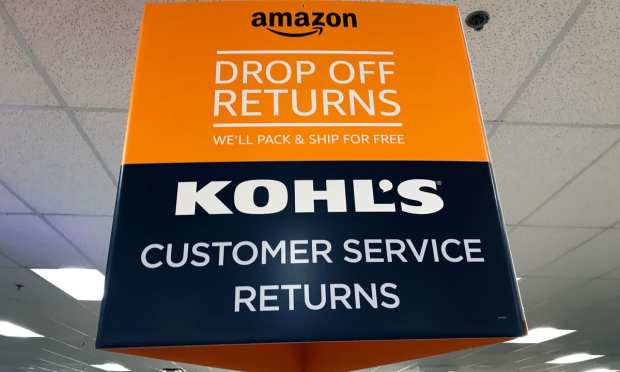Return Season Hits Hard; Some Retailers See Bright Side Of Customer Experience

The dreaded returns season has hit retail with a predictable but painful thud. With Mastercard putting a 49 percent tag on the eCommerce spike for the holidays, this year will be the toughest on record for handling what is a resource- and capital-intensive task. But while the season is here, it doesn’t have to be a time of dread. In fact, forward-thinking retailers are looking at the return process as a chance to create a positive customer experience.
But before getting to the positive ramifications, the fact of the matter is that retailers are facing an unprecedented amount of returns. The National Retail Federation expects roughly 13 percent of merchandise, or about $101 billion worth of goods, sold during the 2020 holiday season will be returned. In a worst-case scenario forecast, according to commercial real estate firm CBRE, the take will be much lower at about $70.5 billion, marking a 73 percent increase over the firm’s estimated average for the previous five years. A rather large share of which, according to reports, will never actually make it back to store shelves — real or virtual. Return costs vary, according to reverse logistics shipping firm Optoro, between categories of goods. They are, however, consistently high. A $50 item, for example, on average has about $30 of return costs associated with it.
According to Optoro Co-Founder and President Adam Vitarello, this is the year returns as part of the customer experience comes to fruition. In the brick-and-mortar retail era it was a nuisance to be avoided. In the eCommerce era, especially with the advent of Amazon and Zappos, free returns became table stakes and a major driver of customer loyalty. Now as the digital-first economy gains traction, returns need to be thought through as a customer strategy. Yes, they can drive loyalty but there’s more to it than a free offer. In fact, Vitarello said a survey his company did a year ago showed that only 15 percent of large retailers thought returns were a major concern. Now that number tops 50 percent.
“One of the things we do with new clients is conduct a returns audit for them,” Vitarello said. “It’s basically an audit of their customer journey and it usually stops at the sale. It’s like retailers are celebrating the sale when the product hasn’t been used yet. But now they’re starting to see that it’s actually a forgotten part of the customer journey and the supply chain.”
Vitarello has seen some of his clients move from discouraging returns to embracing them. In the process, they are capitalizing on a chance to drive loyalty and enhance the brand.
“Rather than trying to shy away from it or put people through hoops, smart retailers are recognizing an opportunity when the customer gets in touch with them,” he said. “They want to take the opportunity to prove their brand value and provide a great return experience. And so you’re seeing a lot of forward-thinking brands now, especially as it’s become a bigger part of their business, make returns easy for customers, which is critical because it drives loyalty.”
Best practices, he said, include cross-selling and up-selling to related items, instant refunds and other promotional items when the return request is received.
Positive factors aside, retailers are working where they can to stem the tide. Return deadlines have been extended in many cases in 2020, in an attempt to spread out the period and lower the peaks. Walmart has already announced a FedEx program to pick up returns at customers’ homes with consumers only required to pack items for shipment themselves (including printing their own shipping label) to tap into the free services. Amazon has expanded its lineup of pickup locations at Whole Foods, Kohls and UPS — in some cases allowing consumers to return packages without packing them first. Malls are even getting in the returns act this year, with massive mall owner Simon Property Group and Mall of America partnering with reverse logistics firm Narvar to allow customers to drop off packages without needing to print out gift labels.
“If you do it right, people will actually spend two or three times more in that one transaction,” Vitarello said. “So you might return the shirt but then buy a sweater or buy something else with your spouse, but then you’ll also spend more long term. And so ultimately eCommerce is a customer lifetime value game, so getting doing things to drive customer lifetime value is critical.”
Will the counter-measures and longer return deadlines deaden the rush? It’s hard to predict, given the scale of eCommerce returns forecast. Data from Salesforce projects that consumers will return about $280 billion worth of global ecommerce orders, roughly 30 percent of all purchases made during the holiday shopping season this year. That, Keith Turco, president and managing director for the Americas at digitization software provider Everything told Footwear News is an extremely large rush of returns to process in what is still a very compressed time window.
“If retailers think they’re stressed getting orders to consumers this holiday season, they’re going to be even more stressed handling all the returns coming back their way,” he said.
Stressed or not, retailers will have to find a way to get it done, as their relationship with the customer in many ways depends on it. According to Optoro, 97 percent of consumers will buy from a retailer again after having a positive returns experience. Which means the race in January will be to those that can safely and securely offer returns that are almost as simple as making the purchase in the first place.
